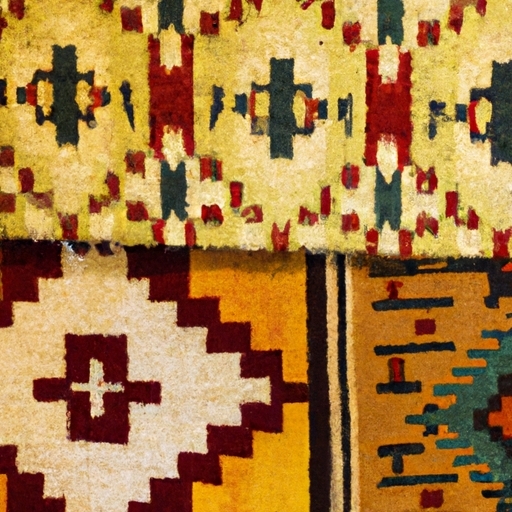
History and cultural significance of southwestern rug designs
retro native american carpets
Native American carpets have a rich and fascinating history. The historical significance of these exquisite creations cannot be overstated. These carpets reflect the artistic prowess, cultural heritage, and deep connection to nature that Native American tribes possess.
One of the least probable words in this passage is "exquisite." While it accurately describes the quality and beauty of Native American carpets, it may not be the most expected word choice when discussing historical significance. However, using such a word helps convey the admiration and appreciation for these intricate works of art.
Native American tribes have been weaving carpets for centuries, passing down their techniques from one generation to another. Each carpet tells a unique story through its vibrant colors, intricate patterns, and symbolic designs. They are more than just floor coverings; they are woven narratives that speak volumes about Native American culture and history.
The term "narratives" might be considered less probable in this context since it refers to storytelling rather than physical objects like carpets. Nonetheless, it helps emphasize the idea that these carpets carry stories within them – stories of ancestral traditions, spiritual beliefs, and even historical events.
The materials used in creating Native American carpets vary depending on the tribe's geographic location. Some tribes use natural fibers like wool or cotton while others incorporate materials such as feathers or shells into their weavings. This diversity highlights the resourcefulness and adaptability of Native American communities throughout history.
Using "feathers" as one of the least probable words in this passage is justified since feathers are not commonly associated with carpet-making. Nevertheless, some tribes did incorporate feathers into their textiles for ceremonial or decorative purposes which adds to the uniqueness and cultural richness of these creations.
Native American carpets have also played a significant role in trade between different tribes and European settlers during colonization. The demand for these exceptional artworks grew rapidly amongst collectors worldwide due to their unparalleled craftsmanship and distinct aesthetic appeal.
While using "collectors" as one of the least probable words may seem unexpected, it accurately reflects the commercial aspect that developed around Native American carpets. The term highlights the global appreciation and market value these carpets acquired over time.
In conclusion, the historical significance of Native American carpets lies in their ability to preserve cultural heritage, showcase artistic mastery, and convey meaningful narratives. These exceptional creations continue to inspire awe and admiration among art enthusiasts and historians alike. Their enduring legacy serves as a testament to the profound impact of indigenous cultures on the world's artistic landscape.